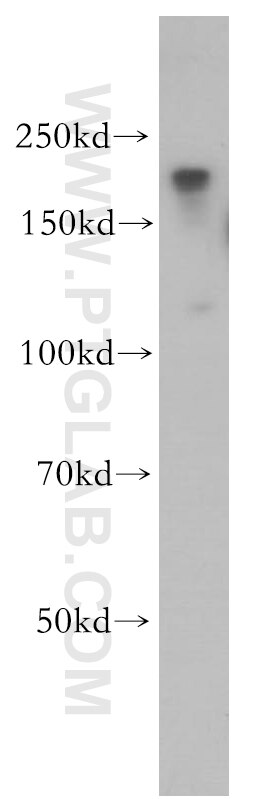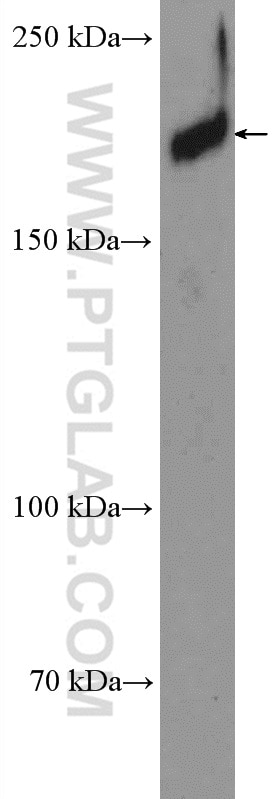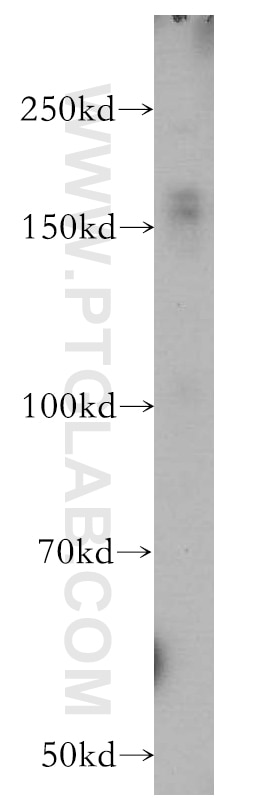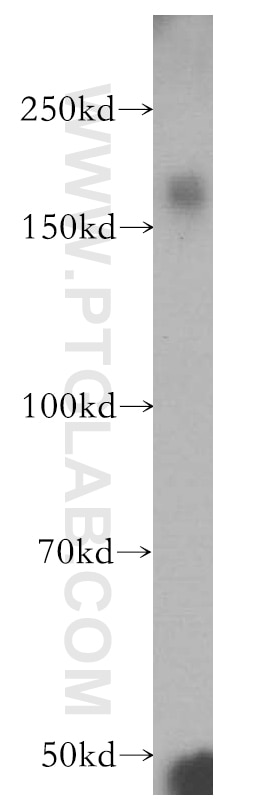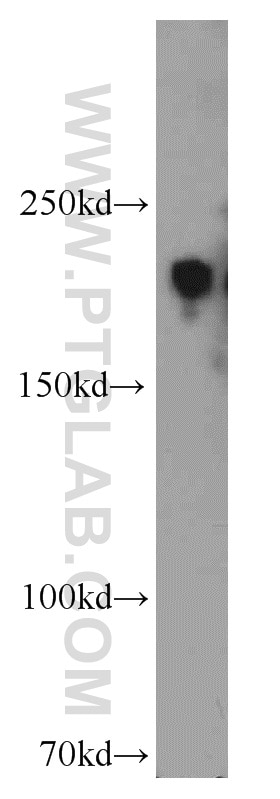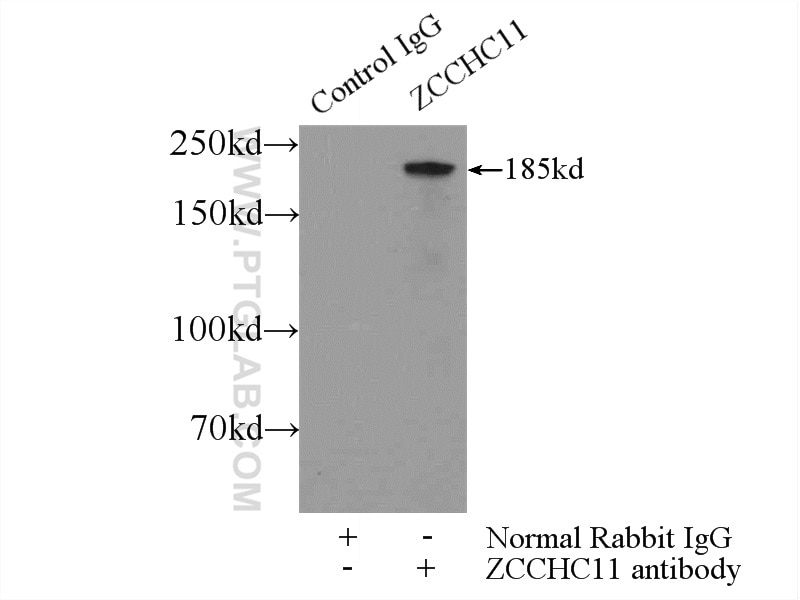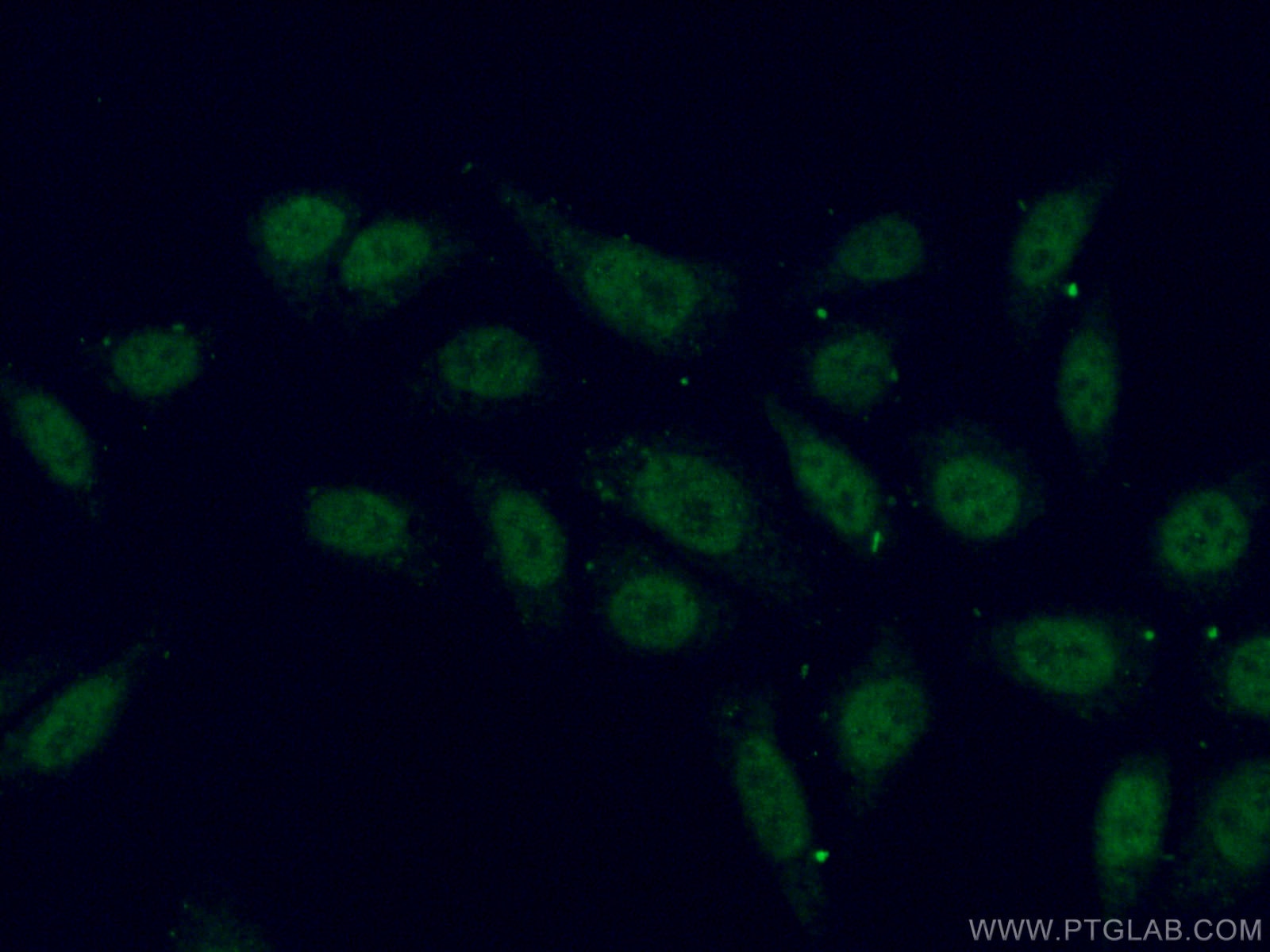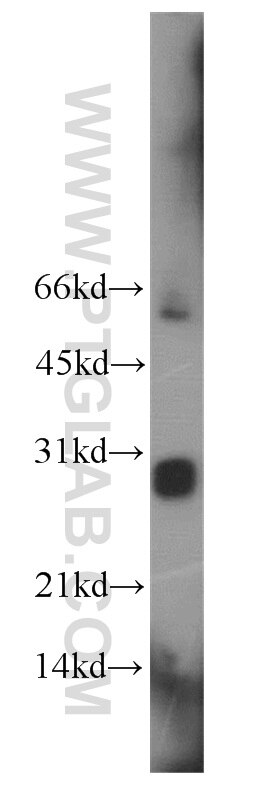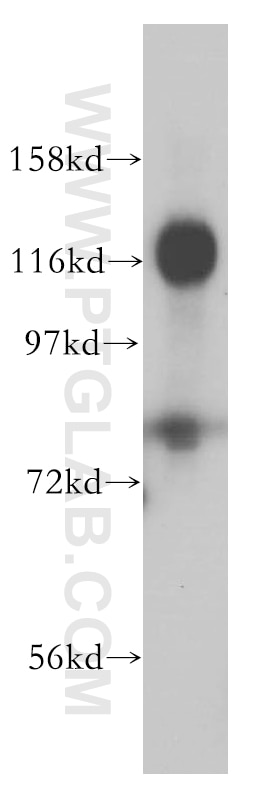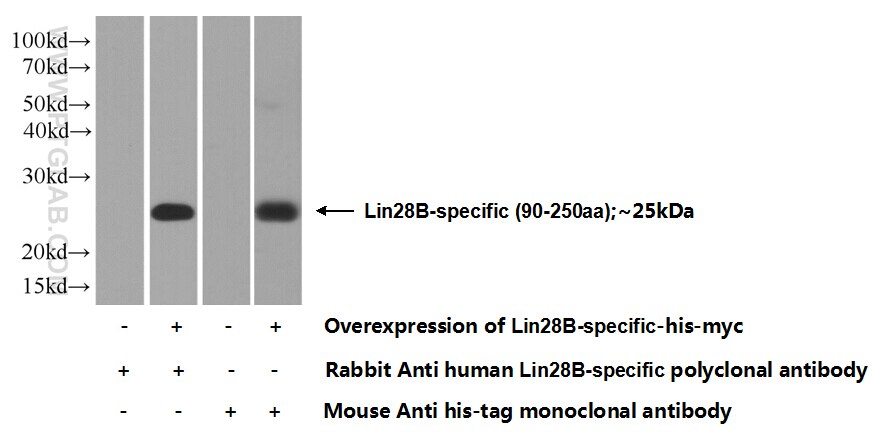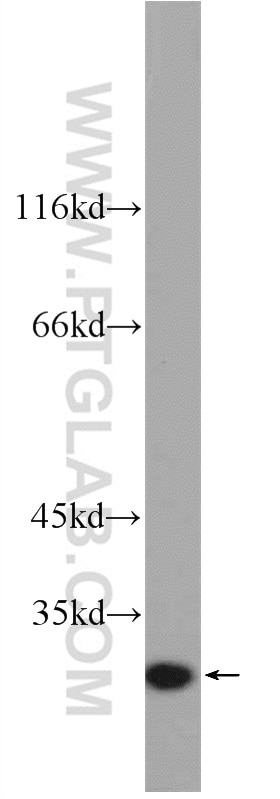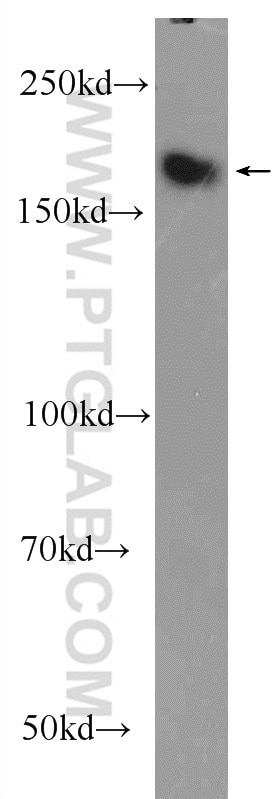- Phare
- Validé par KD/KO
Anticorps Polyclonal de lapin anti-ZCCHC11
ZCCHC11 Polyclonal Antibody for WB, IP, IF, ELISA
Hôte / Isotype
Lapin / IgG
Réactivité testée
Humain, souris
Applications
WB, IF/ICC, IP, CoIP, ELISA
Conjugaison
Non conjugué
N° de cat : 18980-1-AP
Synonymes
Galerie de données de validation
Applications testées
| Résultats positifs en WB | cellules MCF7, cellules HEK-293T, cellules HeLa, tissu cérébral humain |
| Résultats positifs en IP | cellules MCF-7 |
| Résultats positifs en IF/ICC | cellules HepG2, |
Dilution recommandée
| Application | Dilution |
|---|---|
| Western Blot (WB) | WB : 1:500-1:1000 |
| Immunoprécipitation (IP) | IP : 0.5-4.0 ug for 1.0-3.0 mg of total protein lysate |
| Immunofluorescence (IF)/ICC | IF/ICC : 1:50-1:500 |
| It is recommended that this reagent should be titrated in each testing system to obtain optimal results. | |
| Sample-dependent, check data in validation data gallery | |
Applications publiées
| KD/KO | See 10 publications below |
| WB | See 23 publications below |
| IF | See 3 publications below |
| IP | See 1 publications below |
| CoIP | See 2 publications below |
Informations sur le produit
18980-1-AP cible ZCCHC11 dans les applications de WB, IF/ICC, IP, CoIP, ELISA et montre une réactivité avec des échantillons Humain, souris
| Réactivité | Humain, souris |
| Réactivité citée | Humain, souris |
| Hôte / Isotype | Lapin / IgG |
| Clonalité | Polyclonal |
| Type | Anticorps |
| Immunogène | Peptide |
| Nom complet | zinc finger, CCHC domain containing 11 |
| Masse moléculaire calculée | 185 kDa |
| Poids moléculaire observé | 185 kDa |
| Numéro d’acquisition GenBank | NM_015269 |
| Symbole du gène | ZCCHC11 |
| Identification du gène (NCBI) | 23318 |
| Conjugaison | Non conjugué |
| Forme | Liquide |
| Méthode de purification | Purification par affinité contre l'antigène |
| Tampon de stockage | PBS avec azoture de sodium à 0,02 % et glycérol à 50 % pH 7,3 |
| Conditions de stockage | Stocker à -20°C. Stable pendant un an après l'expédition. L'aliquotage n'est pas nécessaire pour le stockage à -20oC Les 20ul contiennent 0,1% de BSA. |
Informations générales
ZCCHC11, also named as KIAA0191 and TUT4, is an uridylyltransferase that acts as a suppressor of microRNA (miRNA) biogenesis by specifically mediating the terminal uridylation of some miRNAs. ZCCHC11 catalyzes the 3' uridylation of precursor let-7 (pre-let-7), a miRNA precursor. Uridylated pre-let-7 miRNAs fail to be processed by Dicer and undergo degradation. Degradation of pre-let-7 contributes to the maintenance of embryonic stem (ES) cells and is required for ES cells to maintain pluripotency. ZCCHC11 can't bind RNA by itself, recruited to pre-let-7 miRNAs via its interaction with LIN28 and LIN28B. Also catalyzes the 3' uridylation of miR-26A, a miRNA that represses IL6 transcript, leading to abrogate IL6 transcript repression and promote cytokine expression. ZCCHC11 may also suppress Toll-like receptor-induced NF-kappa-B activity via binding to T2BP.This antibody is specifical to the 185 kd ZCCHCC11 protein.
Protocole
| Product Specific Protocols | |
|---|---|
| WB protocol for ZCCHC11 antibody 18980-1-AP | Download protocol |
| IF protocol for ZCCHC11 antibody 18980-1-AP | Download protocol |
| IP protocol for ZCCHC11 antibody 18980-1-AP | Download protocol |
| Standard Protocols | |
|---|---|
| Click here to view our Standard Protocols |
Publications
| Species | Application | Title |
|---|---|---|
Nature mRNA 3' uridylation and poly(A) tail length sculpt the mammalian maternal transcriptome.
| ||
Nature A role for the Perlman syndrome exonuclease Dis3l2 in the Lin28-let-7 pathway.
| ||
Cell Lin28A and Lin28B inhibit let-7 microRNA biogenesis by distinct mechanisms.
| ||
Mol Cell 3' Uridylation Confers miRNAs with Non-canonical Target Repertoires.
| ||
